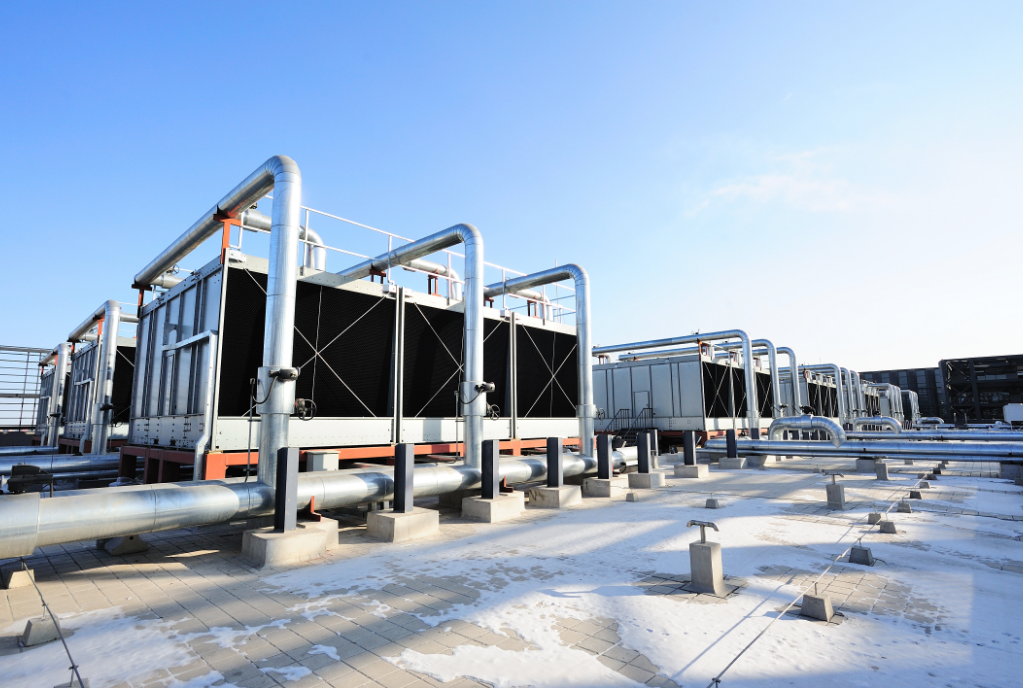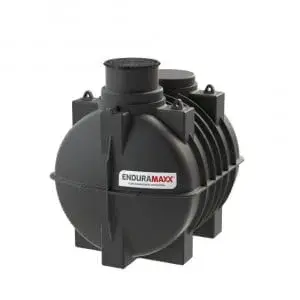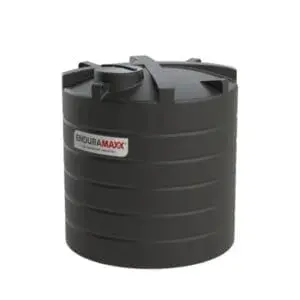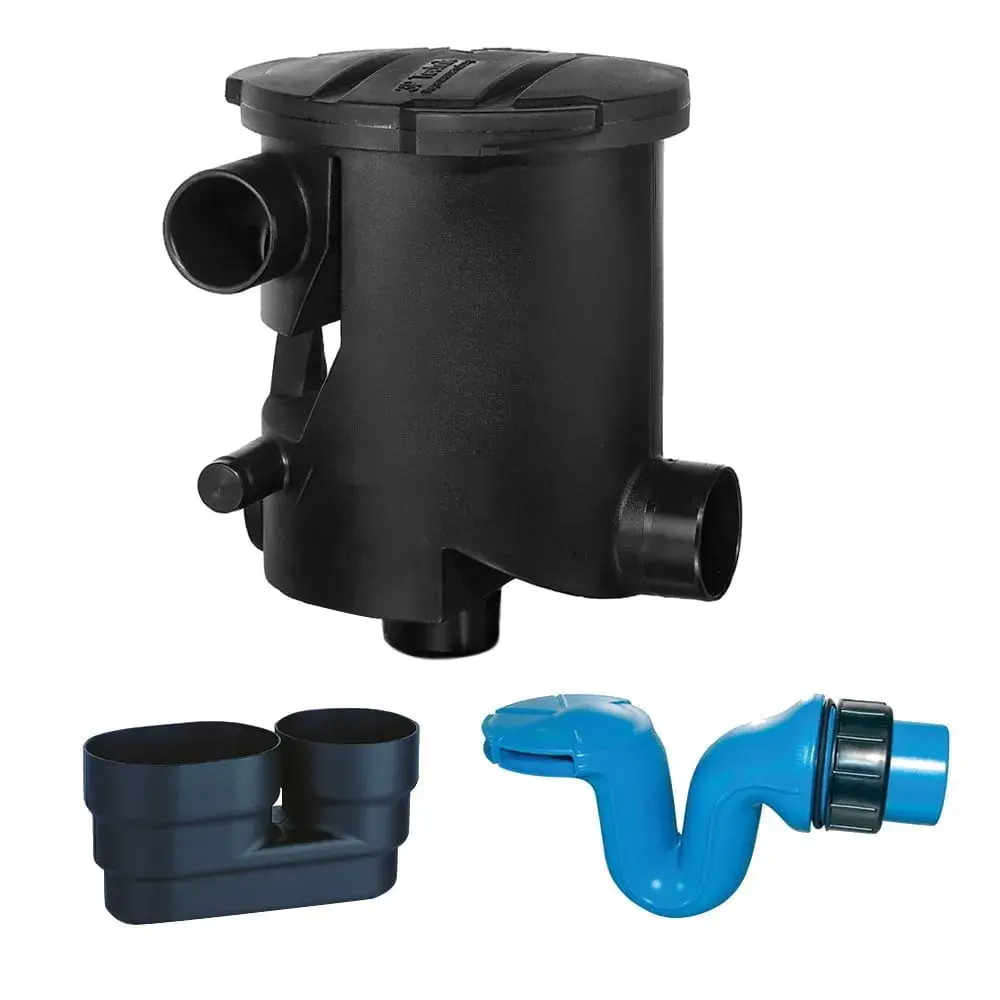What is Cooling Tower Water Treatment, treatment of cooling towers to ensure an efficient process and long equipment service life.
Cooling Tower Water Treatment – companies use cooling towers to ensure an efficient process and long equipment service life. If cooling tower water is left untreated, organic growth, fouling, scaling, and corrosion can reduce plant productivity, cause plant downtime, and require costly equipment replacements in the future.
What is a cooling tower water treatment system?
A cooling tower water treatment system is an arrangement of technologies that remove damaging impurities from cooling tower feed water and circulation water. The specific configuration a system will depend on several things, including:
- What type of cooling tower you have (open circulating, once-through, or closed loop)
- quality of your feedwater
- chemistry/makeup of your circulatory water
- regulatory requirements for discharge
- type of heat exchanger
What’s included in a basic cooling tower water treatment system?
This will depend on the specific components of the cooling tower water system based on the quality of feed water and chemistry of circulatory water in relation to the quality of water needed for the specific cooling tower and related equipment. In general, a basic cooling tower water treatment system typically includes some type of:
- clarification
- filtration and ultrafiltration
- ion exchange/softening
- chemical feed
- automated monitoring
Depending on the impurities present in the water, a combination for these treatments may be required. Depending on the needs of your cooling tower and process, these standard components are usually adequate; however, if your tower requires a system that provides a bit more customization, there might be some features or technologies you will need to add on.
What does a cooling tower water treatment system typically control?
A cooling tower water treatment system generally includes the following to regulate the levels of:
- alkalinity: will dictate the potential of calcium carbonate scale
- chlorides: can be corrosive to metals; different levels will be tolerated based on materials of cooling tower and equipment
- hardness: contributes to scaling in the cooling tower and on heat exchangers
- iron: when combined with phosphate, iron can foul equipment
- organic matter: promotes microorganism growth, which can lead to fouling, corrosion, and other system issues
- silica: known for causing hard scale deposits
- sulphates: like chlorides, can be extremely corrosive to metals
- total dissolved solids (TDS): contribute to scaling, foaming, and/or corrosion
- totals suspended solids (TSS): undissolved contaminants that can cause scaling, biofilms, and/or corrosion
How does a cooling tower water treatment system work?
Specific treatment processes vary depending on the cooling tower and the quality of the water. A typical cooling tower water treatment system will usually include the following steps:
Cooling tower makeup water intake
Makeup water, or the water replacing bleed and evaporated and leaked water from the cooling tower, is first drawn from its source, which could be raw water, city water, city-treated effluent, in-plant wastewater recycle, well water, or any other surface water source.
Depending on the quality of this water, you may or may not need treatment here. If required, this would generally be to remove hardness and silica or stabilizes and adjusts the pH.
At this point in the process, the proper treatment optimizes the tower evaporation cycles and minimizes the water bleed rate to drain beyond what might be done with chemicals alone.
Filtration and ultrafiltration
The next step is generally running the cooling tower water through some type of filtration to remove any suspended particles such as sediment, turbidity, and certain types of organic matter. It is often useful to do this early on in the process. Many filtration systems used can help protect membranes and ion exchange resins from fouling later on in the pre-treatment process, and suspended particles can be removed down to under one micron.
Ion exchange/water softening
If there’s high hardness in your source/makeup water, treatment for the removal of the hardness may be needed. A softening resin can be used which an intense acid cation exchange process, where the resin is charged with a sodium ion, and as the hardness comes through, it has a higher affinity for calcium, magnesium, and iron so it will grab that molecule and release the sodium molecule into the water.
Chemical addition
At this point in the process, there is typically the use of chemicals, such as:
- corrosion inhibitors (e.g., bicarbonates) to neutralize acidity and protect metal components
- algaecides and biocide (e.g., bromine) to reduce the growth of microbes and biofilms
- scale inhibitors (e.g., phosphoric acid) to prevent contaminants from forming scale deposits
Thorough treatment before this stage can help reduce the amount of chemicals needed to treat water at this point in the process, which is ideal considering many chemical treatments can be expensive.
Side-stream filtration
If the cooling tower water is going to be recirculated throughout the system, a side-stream filtration unit will help remove any problematic contaminants that have entered through drift contamination, leak, etc. A good rule of thumb is that, if you are cooling tower water treatment system requires side-stream filtration, about 10% of the circulating water will filter through. It typically consists of a right quality multimedia filtration unit.
We supply a wide range of cooling water control system chemical dosing tanks and bunds as well as instrument systems cabinets. For more details on these products, please get in touch.
Posts By Topics
- Blog (303)
- Chemical Storage Tanks (118)
- Chemical Dosing Tanks (114)
- Chemical Tanks (114)
- Water Tanks (58)
- Rainwater Harvesting Tanks (43)
- Vertical Rainwater Tanks (31)
- Vertical Storage Tanks (31)
- Cone Bottom Tanks (19)
- Conical Cone Tanks (18)
- Rainwater Harvesting (17)
- Water Bowsers (15)
- Horizontal Tanks (14)
- Potable Water Tanks (13)
- Farming (9)
- Case Studies (8)
- Industrial Storage Tanks (7)
- Liquid Fertilser Storage Tanks (6)
- WRAS Approved Potable Tanks (6)
- Wine and Beer Production (6)
- Horizontal Transport Tanks (5)
- Microbrewery (5)
- Rainwater (5)
- Category 5 Break Tanks (4)
- Cider Production (4)
- Mixer Tanks (4)
- Molasses Tanks (4)
- Polyethylene tanks (4)
- Rainwater Filter Kits (4)
- SPECIALIST & BESPOKE TANKS (4)
- Bunded Tanks (3)
- Slimline Tanks (3)
- WRAS Approved (3)
- Clarification Tanks (2)
- Crosslinked Polymer Tanks (XLPE) (2)
- Fertiliser Tanks (2)
- Sump Tanks (2)
- Tank Installation (2)
- Water Butt (2)
- underground water tanks (2)
- ACCESSORIES & FITTINGS (1)
- ATV & UTV SPRAYING UNITS (1)
- Above Ground Effluent Tanks (1)
- Bespoke Tank Frames (1)
- Category 5 Turret (1)
- Caustic Soda Tanks (1)
- Closed Top Bunded Tanks (1)
- Craft beer (1)
- Effluent Tanks (1)
- Enduramaxx (1)
- Ferric Chloride Tanks (1)
- Fire Safety Regulations (1)
- Fire Sprinkler Water Storage Tanks (1)
- Industrial Water Tank (1)
- Open Top Bunded Tanks (1)
- Open Top Cone Tanks (1)
- Open Top Vertical Tanks (1)
- Polyethylene Potable Water Tanks (1)
- Polyvinylidene Fluoride (PVDF) Tanks (1)
- Polyvinylidene Fluoride Tanks (PVDF) (1)
- Pressure Washers (1)
- Pro Series Spot Sprayers (1)
- RWH (1)
- Sodium Hydroxide Storage Tanks (1)
- Sprayer Fill-up Tanks (1)
- Uncategorised (1)
- liquid fertiliser tank (1)
Sign up to the newsletter
enduramaxx.marketing
Related Posts
Effluent & Process Water Treatment Consultancy & Support
Effluent & Process Water Treatment Consultancy & Support, Enduramaxx, wastewater treatment, process...
Coagulation Water Treatment And Wastewater Treatment Processes
Coagulation for Water and Wastewater Treatment Processes – coagulation is an essential part of...
Vegetable Wastewater Processing & Treatment - Settlement & Flocculation
Fruit & Vegetable Processing Wastewater Treatment, a common denominator for most fruit and...
Related Products
From £1,080.00 inc. VAT
£900.00 exc. VAT
From £1,344.00 inc. VAT
£1,120.00 exc. VAT
From £768.00 inc. VAT
£640.00 exc. VAT
£480.00 inc. VAT
£400.00 exc. VAT






